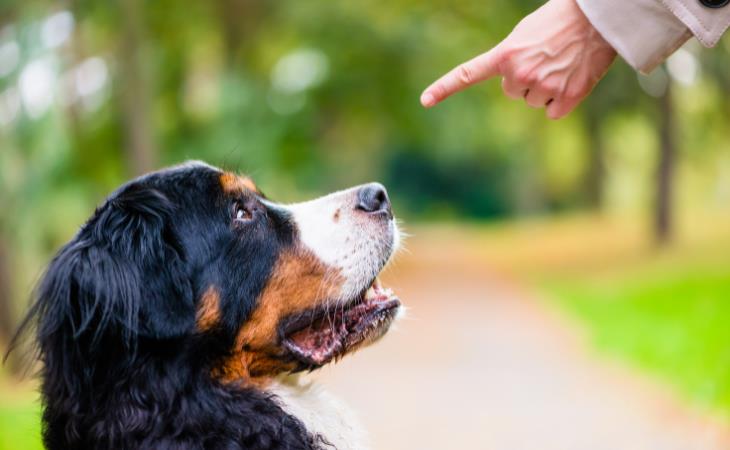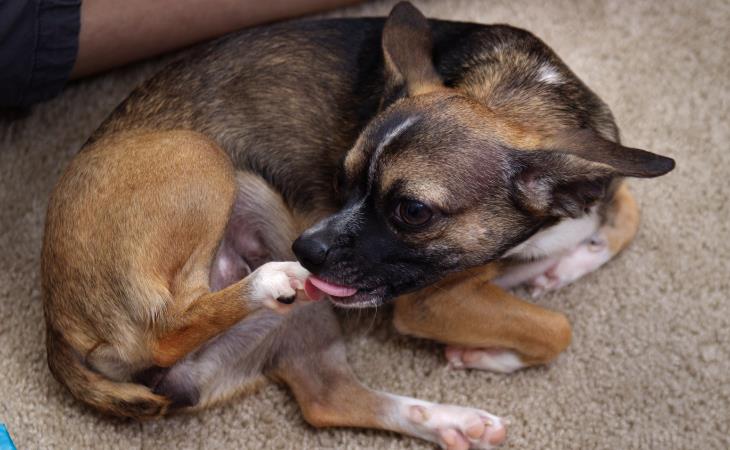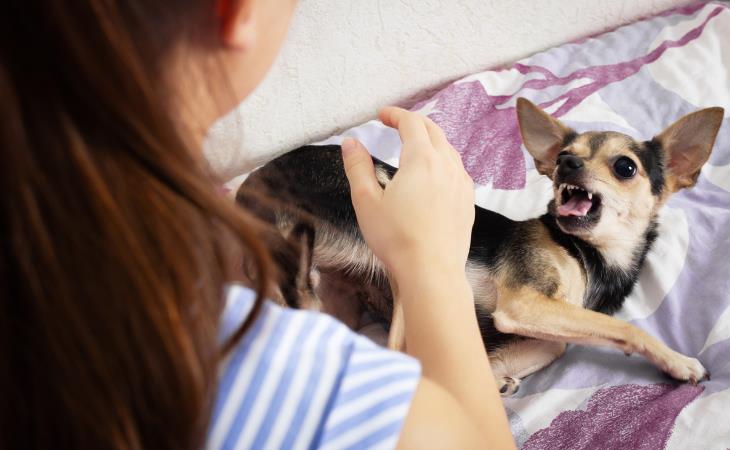
Every dog owner knows the joy of coming home to a wagging tail and enthusiastic greetings. However, there are times when our canine companions seem less than thrilled with us. Dogs may not articulate their feelings with words, but they communicate effectively through their behavior.
If your normally affectionate dog is acting distant or ignoring you, it might be time to check if something’s bothering them. Canine emotions are complex, and while they don’t get angry in the same way humans do, they feel a range of responses, from stress to frustration.
Related: 9 Bizarre Dog Behaviors Explained in One Video
Recognizing these subtle cues of discomfort can help you connect better with your dog and ease any tensions. Here are 14 clear signs that might mean your furry friend is feeling upset.

Eye contact is a big deal for dogs. If they usually look at you but suddenly start avoiding your gaze, it’s a sign they might be upset. Dogs use eye contact to connect with people, so when they avoid it, it’s their way of showing they need space. Try not to force the interaction—let them come to you when they feel ready, and use treats or gentle petting to reassure them.
If your dog turns away and won’t face you, this can be their way of saying they’re unhappy. Turning their back is like a polite way of saying, “I need some space.” This behavior shows a break in their usual attention and affection, so give them time and room. Reconnect with gentle gestures like offering treats or sitting beside them calmly until they feel more at ease.

A dog that suddenly “forgets” commands they know might be sending a message. Ignoring commands can be their way of asserting a little independence or letting you know they’re frustrated. This kind of “rebellion” usually passes if addressed with patience. Try reinforcing commands with rewards like treats or play, which helps your dog feel positive about listening to you again.
If your dog starts hiding or withdrawing to a quiet spot, they might be feeling hurt or anxious. This behavior is common after stressful events, like a loud scolding or an accidental injury. Instead of pulling them out of their safe space, let them be for a while. Gradually, you can try offering treats or soft petting to reassure them and remind them they’re loved.

When a dog that usually loves food suddenly refuses to eat, it’s often a sign they’re upset or stressed. Dogs are food-motivated creatures, so a lack of interest in treats usually signals that something is wrong. Try coaxing them with a favorite snack in a calm setting, and look for any changes in their environment that might be affecting their mood or appetite.
Related: Here’s How Male and Female Dogs Are Different

Paw licking is a common coping mechanism for dogs, especially when they’re feeling stressed or upset. While occasional paw licking is normal, excessive licking may indicate discomfort. Try to identify any recent events that may have triggered this response and offer comforting interactions to help your dog relax.

Destructive behavior, like chewing on furniture or tearing up pillows, can be a sign that your dog is feeling frustrated or upset. This behavior is often a way for dogs to relieve pent-up emotions. To help manage this, make sure they’re getting enough play and attention. Offering chew toys or taking them for walks can redirect their frustration in a healthier way.

Dogs communicate through barking and whining, so if they’re doing it more than usual, they’re likely trying to tell you something. When a dog is frustrated or seeking attention, they might start vocalizing persistently. Provide them with the attention they seek by petting them or playing with them to ease their distress. This often helps calm them down and feel reassured.

The “side-eye” or “whale eye” is when dogs turn their heads away but keep an eye on you, showing the whites of their eyes. This is a subtle cue that they’re feeling wary, annoyed, or uncomfortable. If you notice this, it’s best to avoid sudden movements and give them some space. Over time, you can approach with gentle words or treats to help them relax.
If your dog usually loves sleeping near you but suddenly chooses a different spot, it could mean they’re feeling a little distant. Dogs like to be close to their loved ones as a sign of trust, so sleeping somewhere else might mean they’re not entirely happy. You can try inviting them back with a cozy blanket or gentle encouragement, but respect their choice if they’re not ready to return.

While yawning is natural for dogs, excessive yawning might mean they’re stressed or nervous. Dogs often yawn to relieve tension, so when it happens repeatedly, it can indicate they’re uncomfortable. Look at the situation around them—if there’s something new or unsettling, take steps to create a more calming environment. Gentle pats and a soothing tone can help them feel at ease.
Related: These 8 Things Might Be Making Your Dog Upset!
A big sigh or a series of huffs can express frustration or annoyance. Dogs often sigh when they’re relaxed, but heavy sighing paired with an irritated demeanor could indicate they’re feeling unhappy or upset. Acknowledge their feelings and give them attention. Offer some cuddles, playtime, or a special treat to help turn those annoyed sighs into happy ones.

A dog’s body language speaks volumes. If their posture seems stiff and rigid, it’s a clear sign they’re not feeling relaxed. Their tail, ears, and even the way they hold themselves can reflect their mood. A relaxed, happy dog looks entirely different from one that’s tense. Pay attention to these cues, and approach them calmly to avoid adding to their discomfort.

Dogs are naturally affectionate, so if yours suddenly avoids cuddles or sits away from you, they might be feeling hurt or frustrated. This could mean they’re not seeking their usual snuggles or keeping a little distance, which often indicates emotional upset. Engage with them on their terms - give them treats, toys they enjoy, or engage in a game they enjoy, and let them know that you care for them.